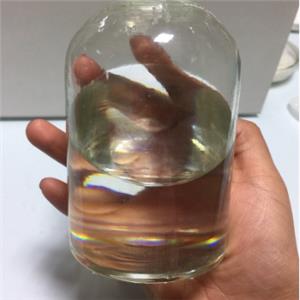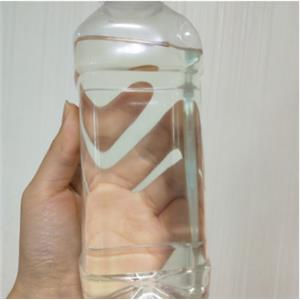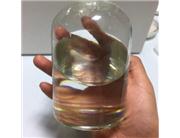Chinese name: 1, 4-butanediol
English name: 1,4-Butanediol
CAS: 110-63-4
EINECS number: 203-786-5
Molecular formula: C4H10O2
MDL number: MFCD00002968
Molecular weight: 90.12
category
Organic material: acyclic alcohol
Appearance properties: colorless, oily liquid.
Appearance: colorless oily liquid. It is miscible with water. Soluble in methanol, ethanol, acetone, slightly soluble in ether.
Solubility: slightly soluble in ether, miscible with water, soluble in ethanol, etc.
Melting point: 20 °C
Boiling point: 230 °C(lit.)
Density: 1.017 g/mL at 25 °C(lit.)
Vapor density: 3.1 (vs air)
Vapor pressure: < 0.1 hPa (20 °C)
Refractive index: n20/D 1.445(lit.)
Flash point: 135 °C
Storage conditions: 2-8°C
Acidity coefficient (pKa) : 14.73±0.10(Predicted)
Form: Liquid
Color: clear and colorless
PH value: 7-8 (500g/l, H2O, 20℃)
Odor: Odorless
Water solubility: Miscible
Sensitivity: hygroscopicity
BRN: 1633445
Dielectric constant: 30.0 (30℃)
Stability: Stable.
Use 1
Used as a solvent and humidifier, also used in the production of plasticizers, drugs, polyester resin, polyurethane resin and so on
Preparation method
Method one
1. Acetylene process 1, 4-butylenediol is prepared by the reaction of acetylene and formaldehyde in the presence of Cu-Bi catalyst at 98kPa, 80-95℃. The latter was then catalyzed by skeleton nickel and hydrogenated to 1, 4-butanediol at 1.372-2.06MPa, 50-60℃, followed by Ni-Cu-Mn/Al2O3 for further catalytic hydrogenation (13.7-20.6MPa, 120-140℃) to 1, 4-butanediol. After removing metal ions by ion exchange resin, Then it is distilled and purified to produce pure products. 3. Butadiene process by 1, 3-butadiene and acetic acid and oxygen acetyl oxidation reaction, to produce 1, 4-diacetoxy-2-butadiene, and then hydrogenated, hydrolysis. 4.1, 4-dichlorobutadiene method 1, 4-dichlorobutadiene is an intermediate product of the process of butadiene production of chlorobutadiene, using it as a raw material, through hydrolysis and hydrogenation to obtain 1, 4-butadiol.






 China
China

